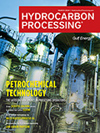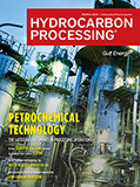Aromatics
An innovative process for simultaneously producing high-purity benzene and U.S.-grade gasoline from FCC C6 heartcut
Mobile Source Air Toxics (MSAT) II regulations restrict the average benzene level in gasoline sold in the U.S. to 0.62 vol%. In India and in several other countries, benzene in gasoline is presently restricted to 1 vol%. Fluid catalytic cracking (FCC) gasoline contributes to nearly 10%–20% of the gasoline pool in a typical refinery.
Business Trends: A 2024 and beyond outlook for the GCC chemical industry
The global chemical industry faced a challenging year in 2023. Various factors contributed to sluggish demand growth for chemicals globally, including the European recession, U.S. inflation and a lower-than-expected chemical demand rebound in China. These factors resulted in global chemical market growth of < 1% in 2023, with many producers experiencing lower output.
Digital Exclusive: Bio-based aromatics give pathway to drop-in 100% SAF
In this digital exclusive, Iain Gilmore and David Kettner discuss a breakthrough process that provides the missing link to using 100% SAF in current aviation fleets and infrastructure: Bio-based aromatics.
How to gain an advantage from the propylene production gap—Part 2
This work will detail the available processing routes capable of maximizing propylene yield in refineries, allowing refiners to gain advantage from the propylene market.
Refineries’ pandemic turmoil—KNPC’s gasoline demand: Opportunities and challenges
The COVID-19 pandemic is regarded as one of the most exceedingly difficult challenges faced in the oil and gas industry's history.
ASTM decision brings 100% SAF certification within reach
Swedish Biofuels AB announced that the ASTM International Committee has accepted the use of C2 to C5 alcohols as feedstock for the alcohol-to-jet pathway as well as a new specification for fully formulated aviation fuel with aromatics.
The importance of operational readiness
Over the last 20 yr–30 yr, manufacturing facilities and project teams have spent significant time and money developing tools to navigate the issues of designing, procuring and building projects.
Development and commercialization of an olefins removal catalytic technology
Aromatics—specifically, benzene, toluene and xylenes (BTX)—are the basic building blocks for most petrochemical derivatives and commodities chemicals.
BioBTX and Agilyx announce collaboration for the production of circular aromatic chemicals
BioBTX B.V. and Agilyx ASA have entered into a strategic collaboration to explore the scale-up of BioBTX technology at a commercial demonstration plant for the production of renewable aromatic chemicals.
Chevron Lummus Global announces ISOFINISHING Award from BPCL
Chevron Lummus Global LLC announced that Bharat Petroleum Corp. Ltd. has selected its ISOFINISHING technology for a catalytic processing unit at the Mumbai Refinery in Mumbai, India.

- Meridian Energy Group’s Davis Refinery Project in North Dakota (U.S.) will be the world’s first net-zero carbon refinery 4/17
- Lummus expands R&D capabilities to enhance innovation and water and wastewater technologies 4/17
- Niger plans to build diesel refinery and increase supplies to Mali 4/17
- BASF, SABIC, and Linde celebrate the start-up of the world's first large-scale electrically heated steam cracking furnace 4/17
- U.S. crude stocks rise, gasoline, distillate inventories fall 4/17
- Russia's offline primary oil refining capacity revised up for April 4/17




